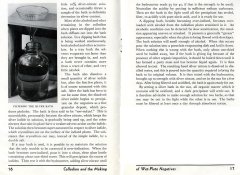Leave Me Here
Member
- Joined
- May 5, 2012
- Messages
- 11
- Format
- Large Format
Dear World,
I'm relatively new to the world of Wet Plate Collodion, however I have been shooting almost daily for the last couple of months.
As I have never had to do it before, my question is;
- How exactly do you maintain the gravity of your silver nitrate bath?
I started with a 400ml 9% bath (36grams of silver in 400ml of distilled water), which had a specific gravity of 76
I now I have 370ml bath at a specific gravity of 62
I'm really noticing the loss of good contrast and true blacks in my images, so I would like to fix this as soon as possible.
Side notes:
- I have been sporadically filtering my bath threw proper laboratory filter paper
- I am familiar with 'sunning' the silver bath, but I am yet to do so.
Any info anyone could give me would be greatly appreciated!!
Thank you kindly,
Matt
I'm relatively new to the world of Wet Plate Collodion, however I have been shooting almost daily for the last couple of months.
As I have never had to do it before, my question is;
- How exactly do you maintain the gravity of your silver nitrate bath?
I started with a 400ml 9% bath (36grams of silver in 400ml of distilled water), which had a specific gravity of 76
I now I have 370ml bath at a specific gravity of 62
I'm really noticing the loss of good contrast and true blacks in my images, so I would like to fix this as soon as possible.
Side notes:
- I have been sporadically filtering my bath threw proper laboratory filter paper
- I am familiar with 'sunning' the silver bath, but I am yet to do so.
Any info anyone could give me would be greatly appreciated!!
Thank you kindly,
Matt












